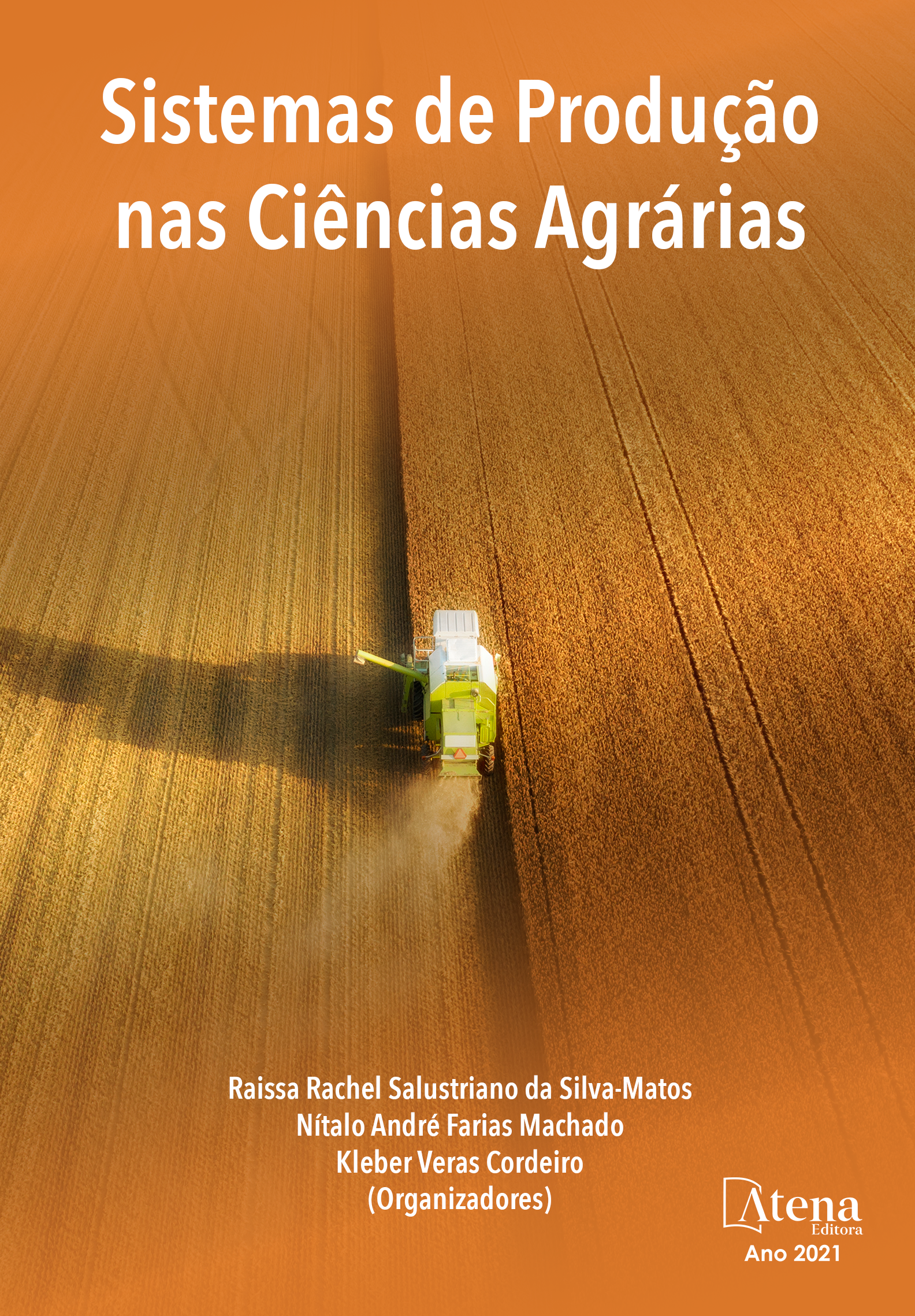
DINÂMICA DE PERFILHAMENTO do Paspalum oteroi SOB SOMBREAMENTO NATIVO
O objetivo foi avaliar a dinâmica de perfilhamento do Paspalum oteroi em sistema sombreado por Terminalia argentea, recebendo adubação foliar. As avaliações ocorreram de dezembro de 2017 a dezembro de 2018, divididas em três períodos. O delineamento utilizado foi em blocos casualizados, sendo três blocos, com quatro unidades experimentais por bloco, totalizando 12 unidades para cada sistema (sombreado e a pleno sol). Os tratamentos utilizados foram três níveis do adubo foliar Quimiorgen Pasto® e um tratamento controle. Os níveis de adubo foliar não mostraram efeito (P≥0,05) sobre a dinâmica de perfilhamento. Porém, ocorreu efeito significativo (P≤0,05) da interação sistema × período. A taxas de aparecimento (TxAp) de perfilhos basais foram semelhantes (P≥0,05) entre os sistemas no primeiro período, maior (P≤0,05) no sistema a pleno sol no segundo período e, no sistema sombreado no terceiro período. A TxAp de perfilhos aéreos foi menor (P≤0,05) no sistema sombreado. A taxa de sobrevivência (TxSb) de perfilhos basais foi semelhante (P≥0,05) entre os sistemas no primeiro e terceiro períodos, e maior (P≤0,05) no sistema sombreado no segundo período. A TxSb de perfilhos aéreos foi maior (P≤0,05) sob sombreamento no primeiro e segundo períodos, e semelhante (P≥0,05) entre os sistemas no terceiro. A taxa de mortalidade (TxMo) de perfilhos basais foi maior (P≤0,05) no sistema sombreado no primeiro período e menor (P≤0,05) no segundo. A TxMo de perfilhos aéreos foi menor (P≤0,05) no sistema sombreado no primeiro e segundo períodos. No terceiro período as TxMo de perfilhos basais e aéreos foram semelhantes (P>0,05) entre os sistemas. Como esperado, a dinâmica de perfilhamento é influenciada pela precipitação pluviométrica e temperatura nos diferentes períodos. Entretanto, considerando a interação desses fatores com o sombreamento nas TxSb e TxMo de perfilhos, a forrageira é adaptada ao sombreamento.
DINÂMICA DE PERFILHAMENTO do Paspalum oteroi SOB SOMBREAMENTO NATIVO
-
DOI: 10.22533/at.ed.1682118026
-
Palavras-chave: Adubação foliar, grama-tio-pedro, forrageira nativa, transição Cerrado-Pantanal, Terminalia argentea.
-
Keywords: Cerrado-Pantanal transition, foliar fertilization, native pasture, Terminalia argentea, tio-pedro-grass.
-
Abstract:
The objective was to evaluate the tillering dynamics of Paspalum oteroi in a shaded system by Terminalia argentea, under foliar fertilization. The evaluations occurred from December 2017 to December 2018, divided into three periods. The design was in randomized blocks, with three blocks, with four experimental units per block, totaling 12 units for each system (shaded and in full sun). The treatments were three levels of foliar fertilizer Quimiorgen Pasto® and a control treatment. Foliar fertilizer levels did not show an effect (P≥0.05) on tillering dynamics. However, there was a significant effect (P≤0.05) of the system × period interaction. The appearance rate (ApRt) of basal tillers was similar (P≥0.05) between the systems in the first period, higher (P≤0.05) in the full sun system in the second period and, in the shaded system in the third period. The ApRt of aerial tillers was lower (P≤0.05) in the shaded system. The survival rate (SvRt) of basal tillers was similar (P≥0.05) between the systems in the first and third periods and higher (P≤0.05) in the shaded system in the second period. The SvRt of aerial tillers was higher (P≤0.05) under shading in the first and second periods, and similar (P≥0.05) between the systems in the third. The mortality rate (MoRt) of basal tillers was higher (P≤0.05) in the shaded system in the first period and lower (P≤0.05) in the second. The MoRt of aerial tillers was lower (P≤0.05) in the shaded system in the first and second periods. In the third period, the MoRt of basal and aerial tillers was similar (P> 0.05) between the systems. As expected, the tillering dynamics is influenced by rainfall and temperature in the different periods. However, considering the interaction of these factors with the shading in SvRt and MoRt of tillers, the grass is adapted to the shading.
-
Número de páginas: 15
- Pedro Otavio Lopes de Azevedo
- Estácio Lopes de Sousa
- Adriano de Melo Araújo
- Geovane Gonçalves Ramires
- Alex Coene Fleitas
- Robson Balbuena Portilho
- Patrícia dos Santos Gomes
- João Paulo Dechnes Ramos
- Luísa Melville Paiva
- Sandra Aparecida Santos
- Henrique Jorge Fernandes
- Estella Rosseto Janusckiewicz


